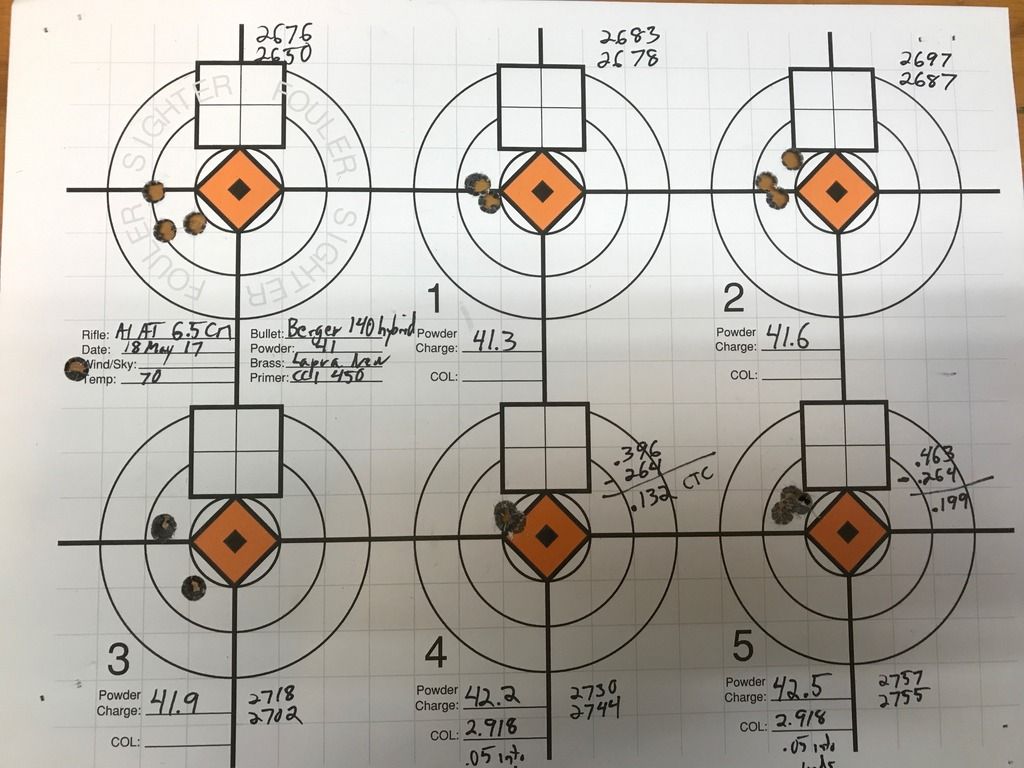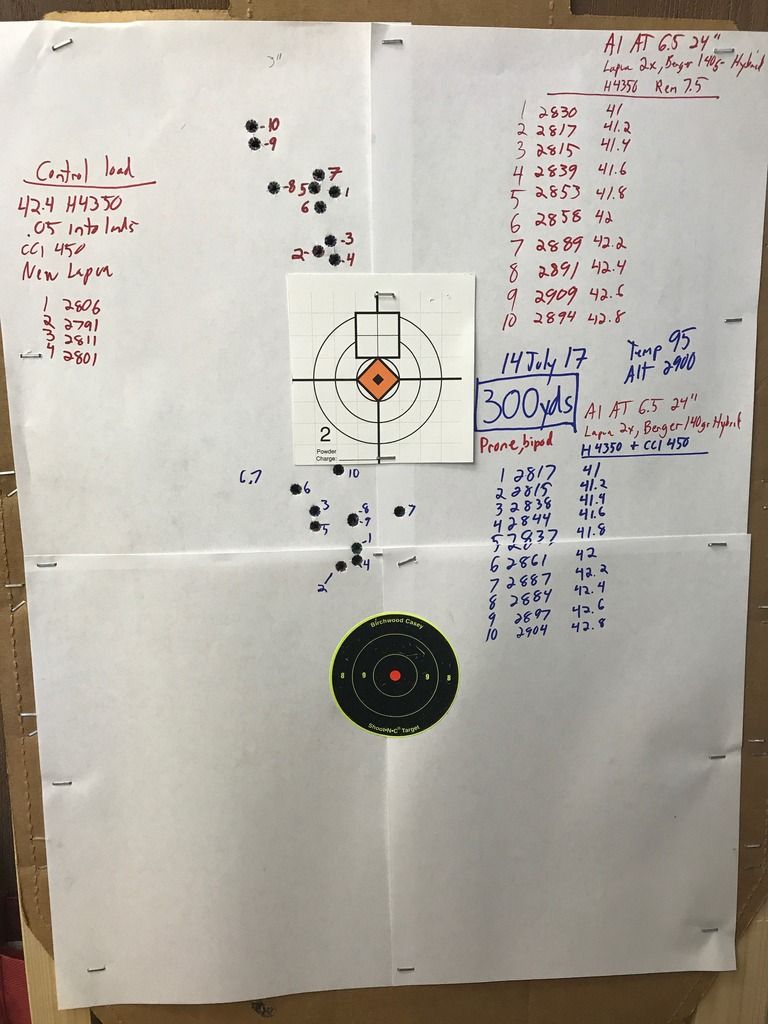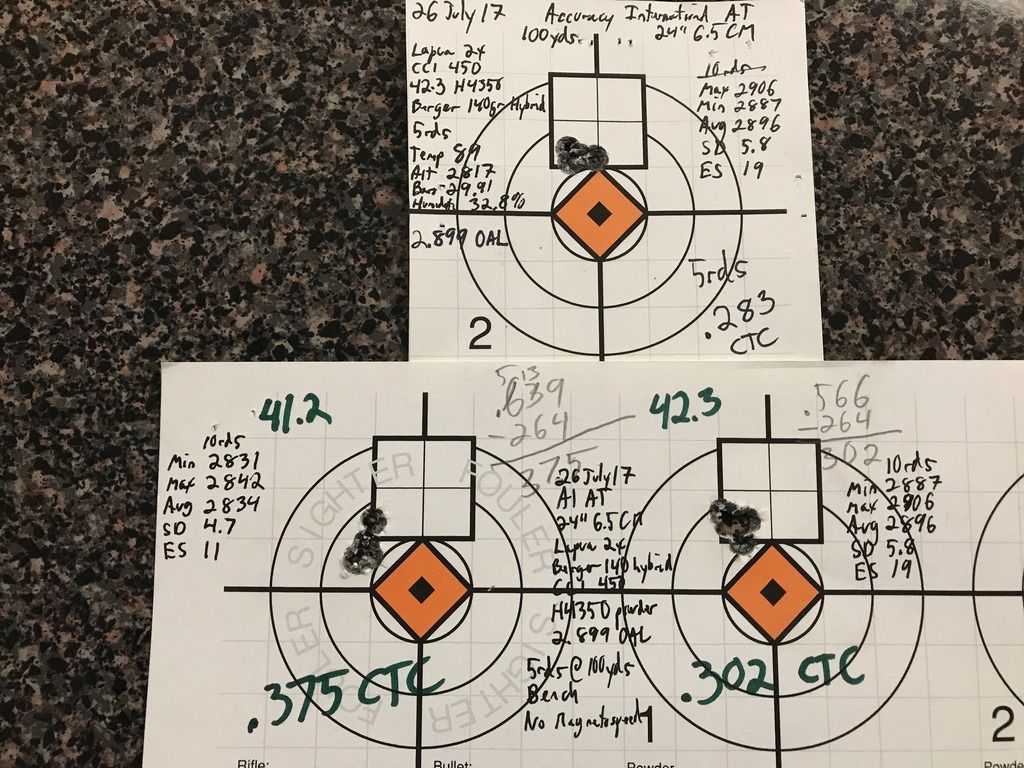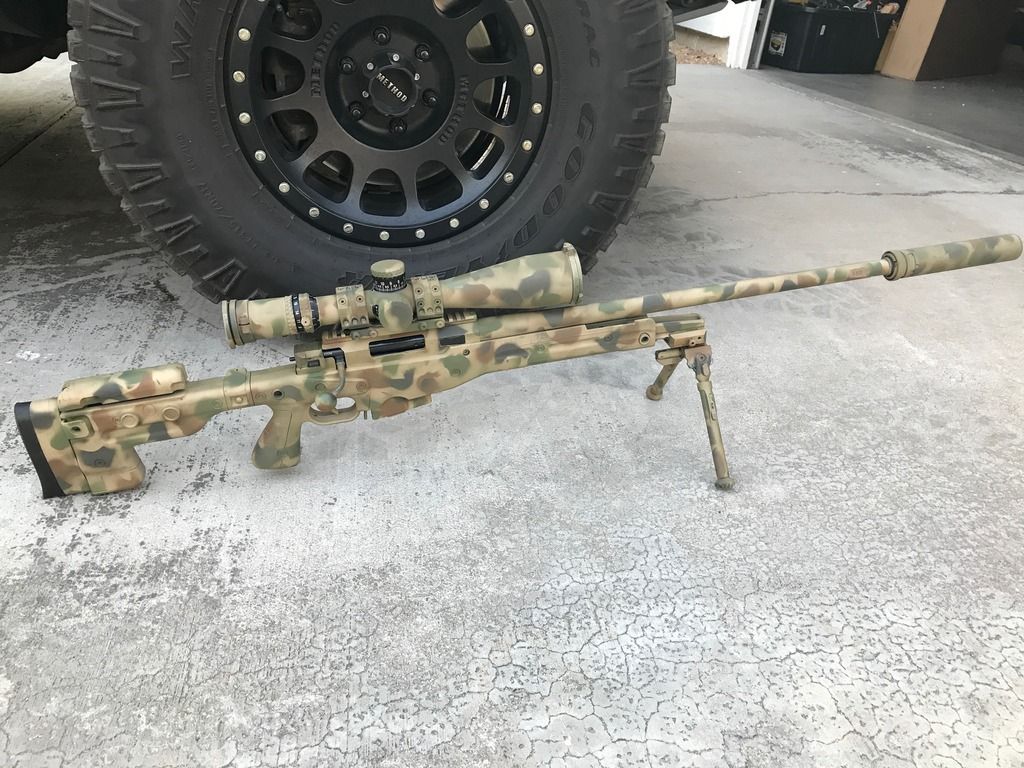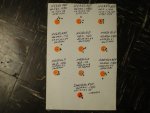So I chrono a bunch of my 6.5 Creedmoor reloads and I can't get them out of the 20's for standard deviation.
Tikka T3 CTR rifle 20" barrel
Brass full length sized.
Shoulder bumped back .002
No Neck sizer bushings used
Same headstamp brass trimmed to 1.910
Primer pockets cleaned and uniformed
Federal Match Large Rifle primers
Flash hole work done
Auto powder measure with the same powder charge for each round
All bullets seated off the ojive with Forster Ultra Seater Die
Hornady ELDM and Nosler RDF 140gn bullets used
Diamerter of neck with loaded rounds .290
5 shots per each load and bullet mostly IMR 4350 and H4350
Standard Deviations run from low 20's to high 20's with spreads from low 20's to mid 60's. Velocities average 2550 to 2600. But I cracked 2736 with Reloader 17.
Even with the Hornady ELDM factory 140gn out of the 20" barrel gave me avg 2590FPS with standard deviation of 27.0 and spread of 76
Is it possible that the 20" barrel is not capable of obtaining low standard deviations?
I'm going to try different primers first. I have read that the S&B large rifle primers have a lower SD than the Federal Match Primers.
Is there something I'm missing here that I should be doing? Any help would be appreciated.
Tikka T3 CTR rifle 20" barrel
Brass full length sized.
Shoulder bumped back .002
No Neck sizer bushings used
Same headstamp brass trimmed to 1.910
Primer pockets cleaned and uniformed
Federal Match Large Rifle primers
Flash hole work done
Auto powder measure with the same powder charge for each round
All bullets seated off the ojive with Forster Ultra Seater Die
Hornady ELDM and Nosler RDF 140gn bullets used
Diamerter of neck with loaded rounds .290
5 shots per each load and bullet mostly IMR 4350 and H4350
Standard Deviations run from low 20's to high 20's with spreads from low 20's to mid 60's. Velocities average 2550 to 2600. But I cracked 2736 with Reloader 17.
Even with the Hornady ELDM factory 140gn out of the 20" barrel gave me avg 2590FPS with standard deviation of 27.0 and spread of 76
Is it possible that the 20" barrel is not capable of obtaining low standard deviations?
I'm going to try different primers first. I have read that the S&B large rifle primers have a lower SD than the Federal Match Primers.
Is there something I'm missing here that I should be doing? Any help would be appreciated.

